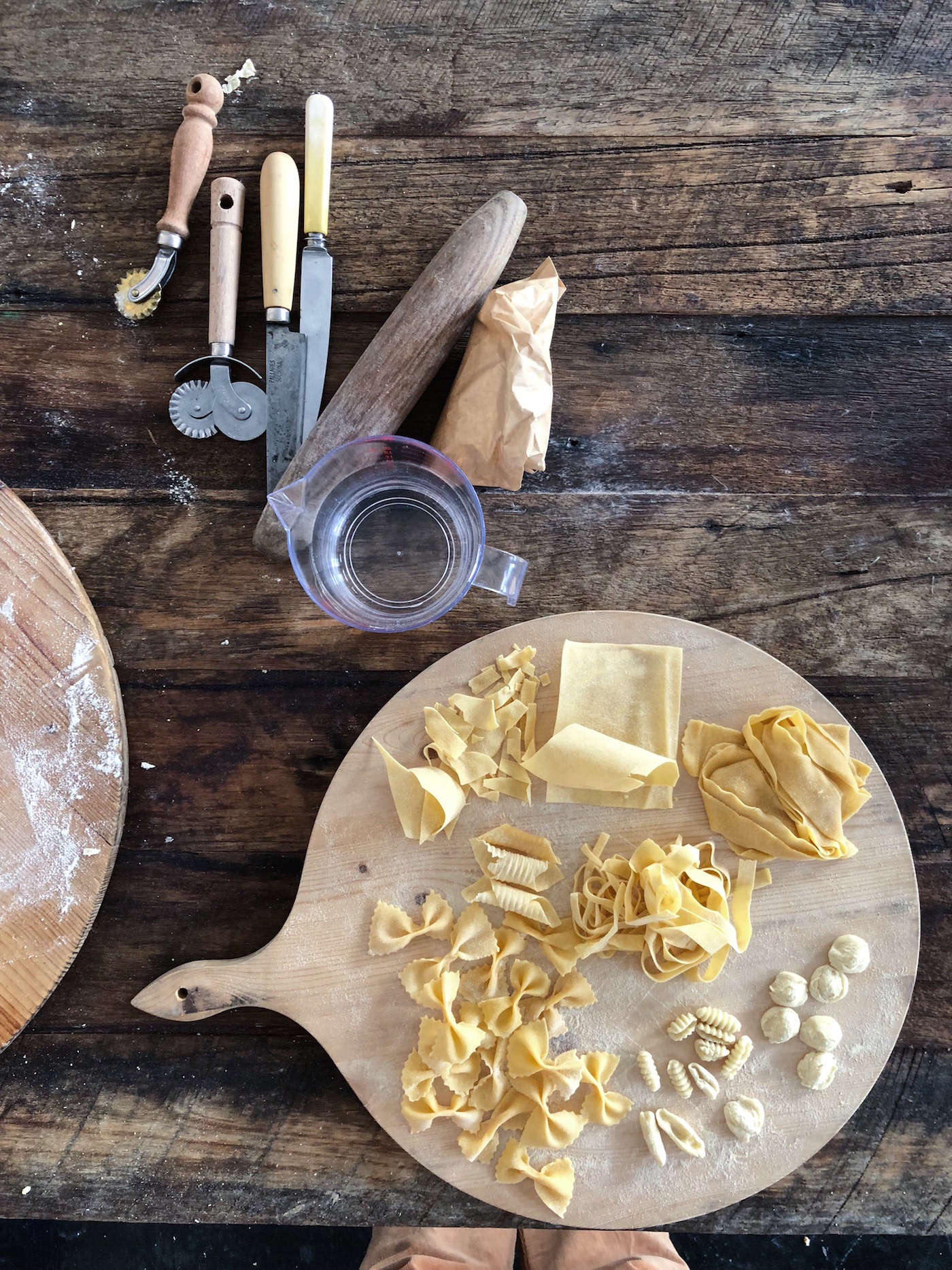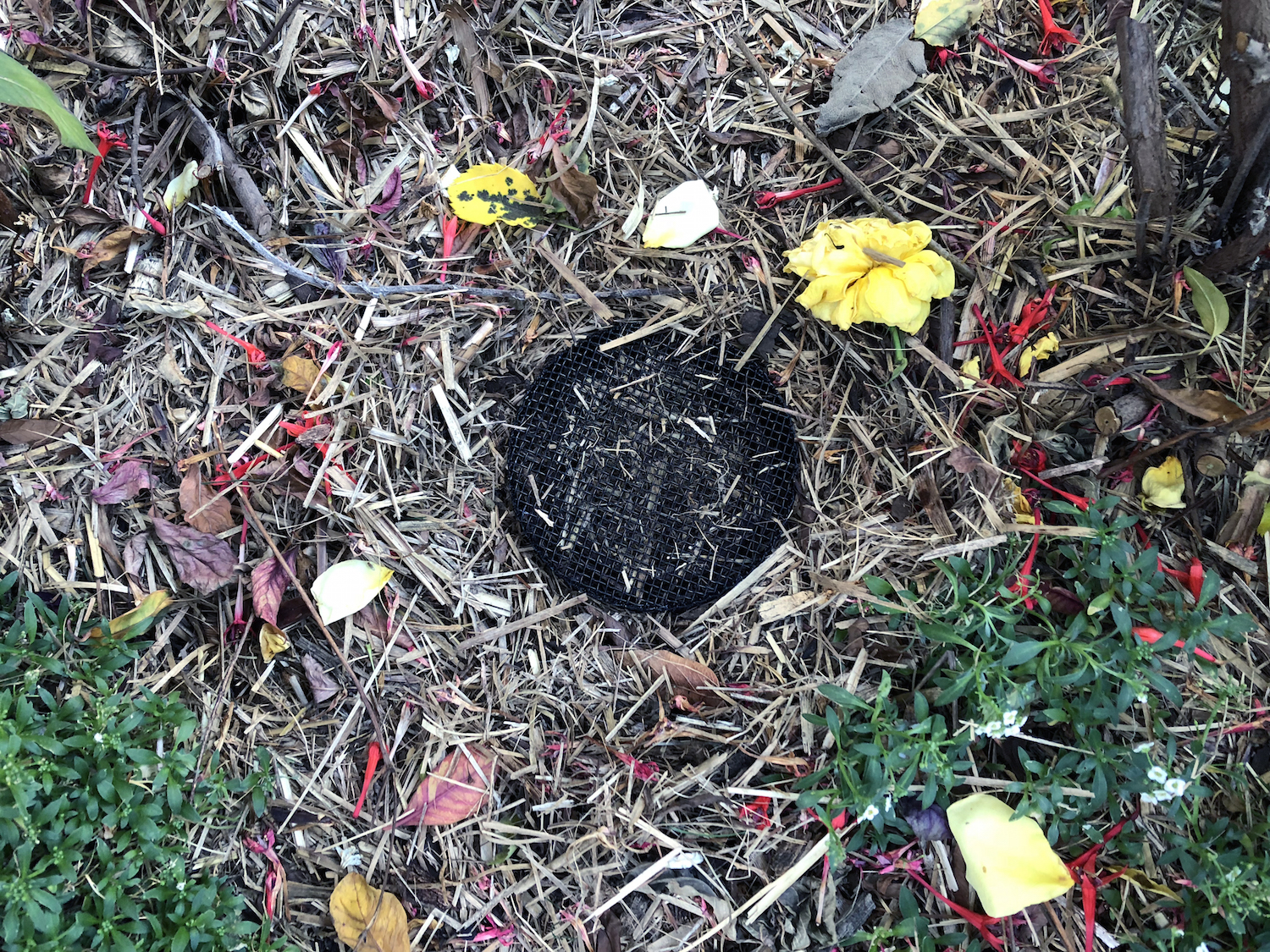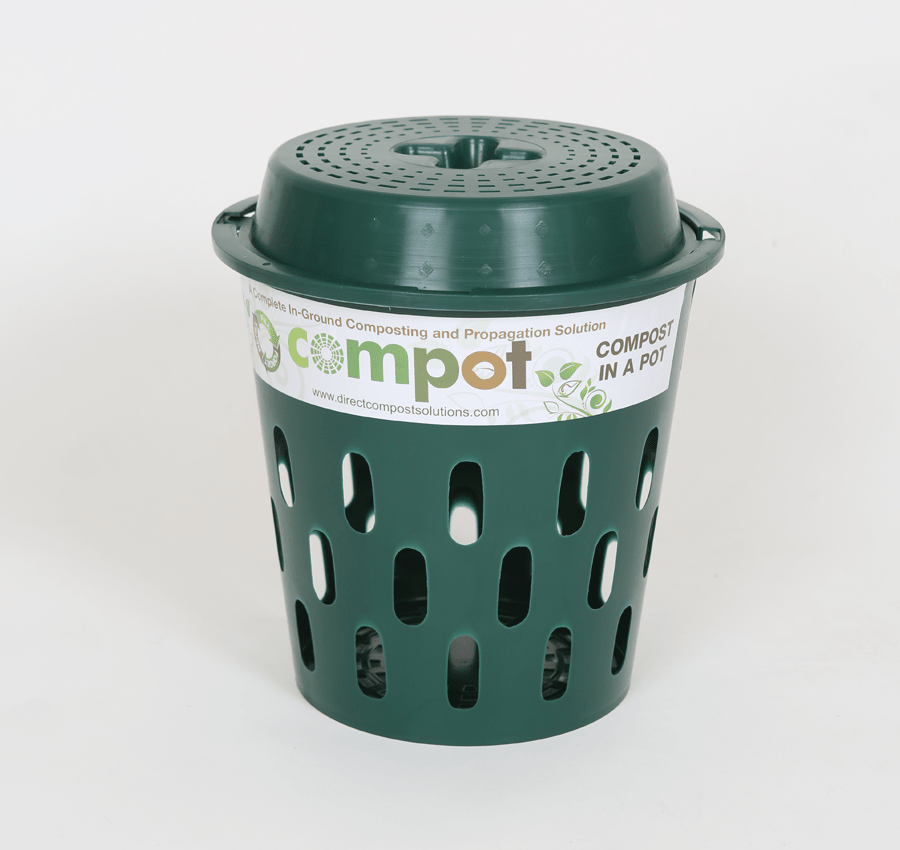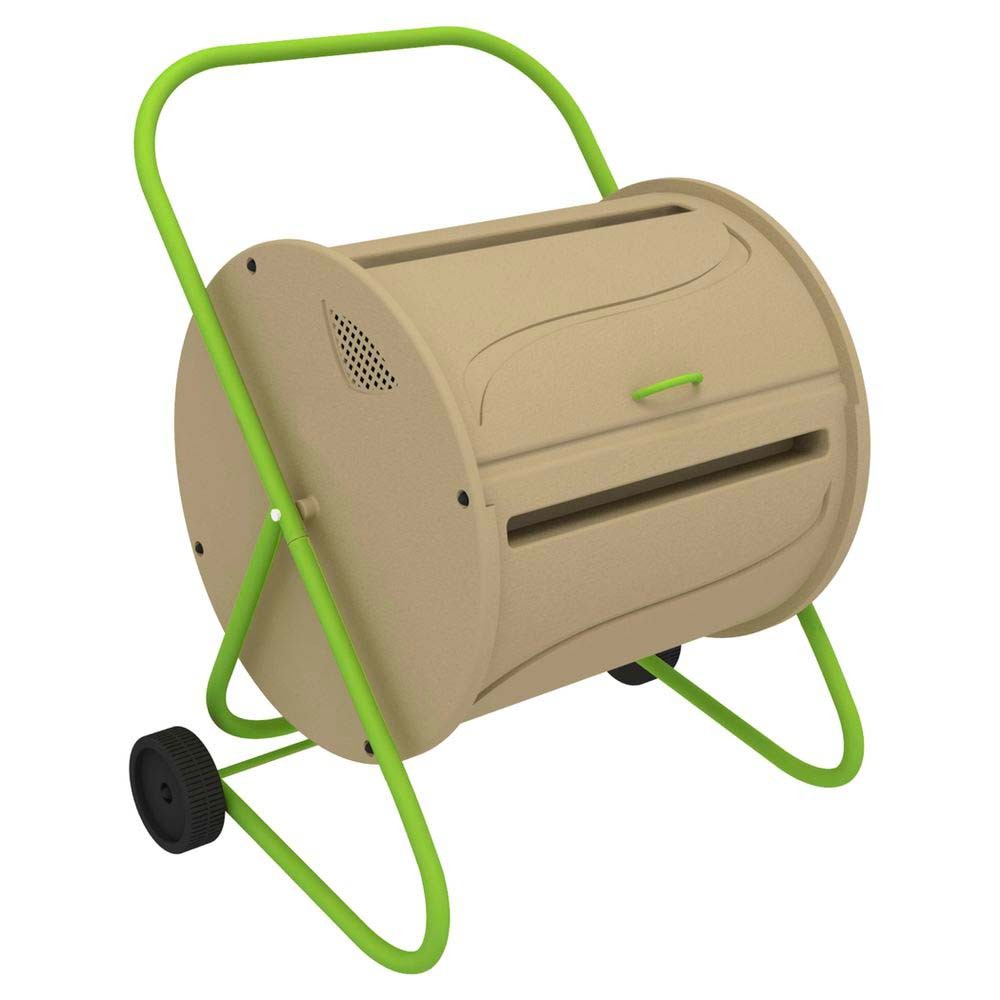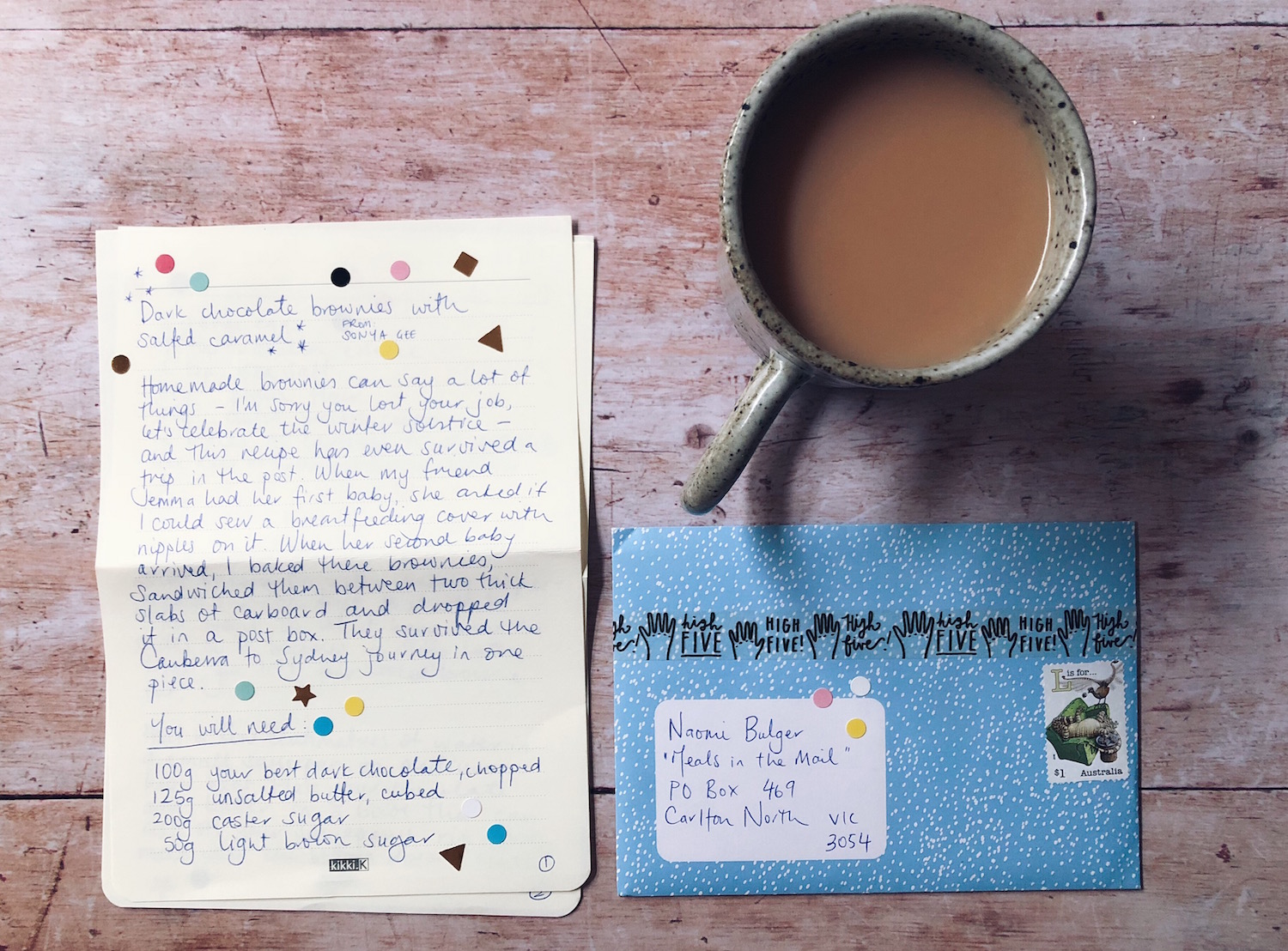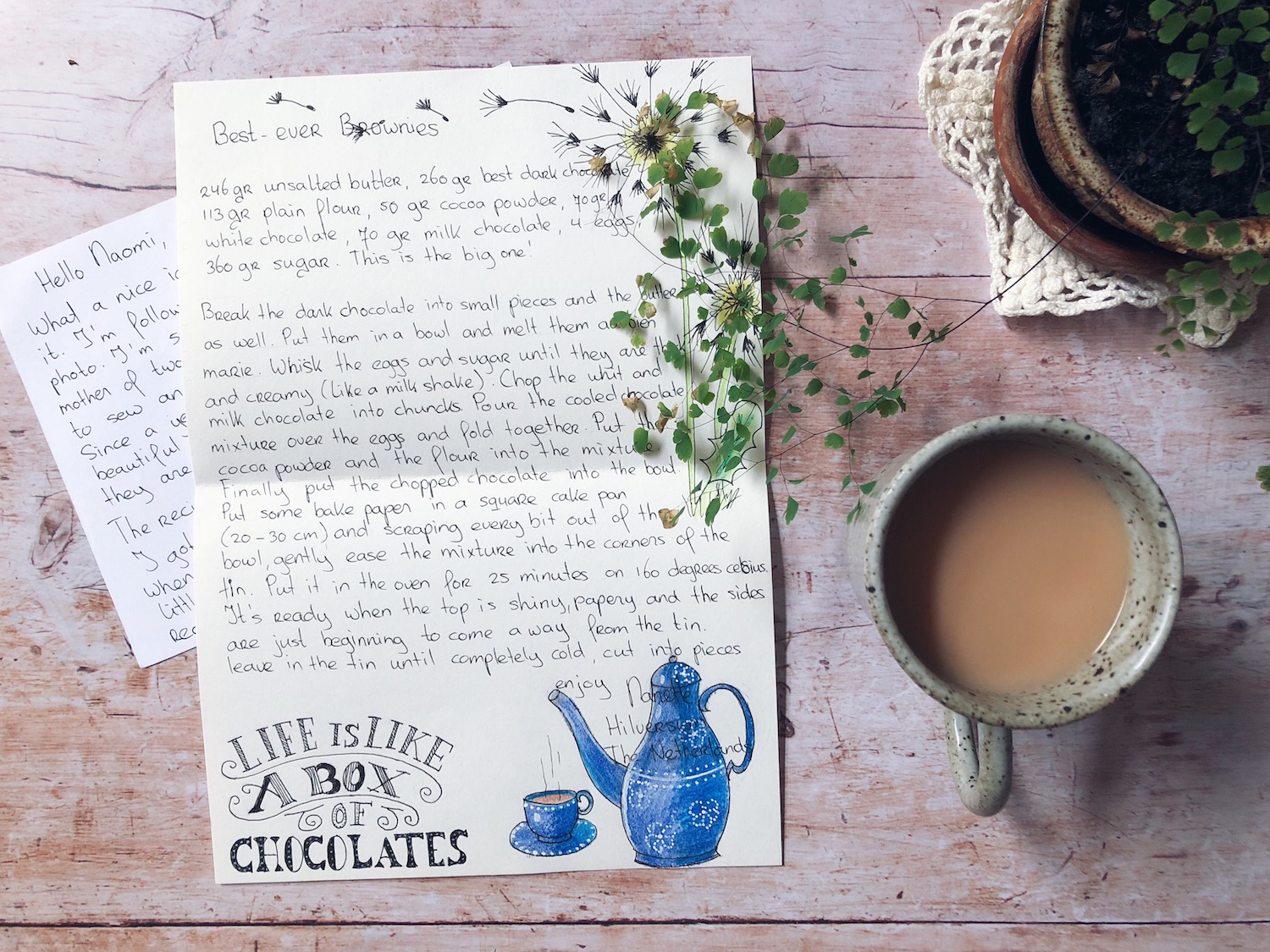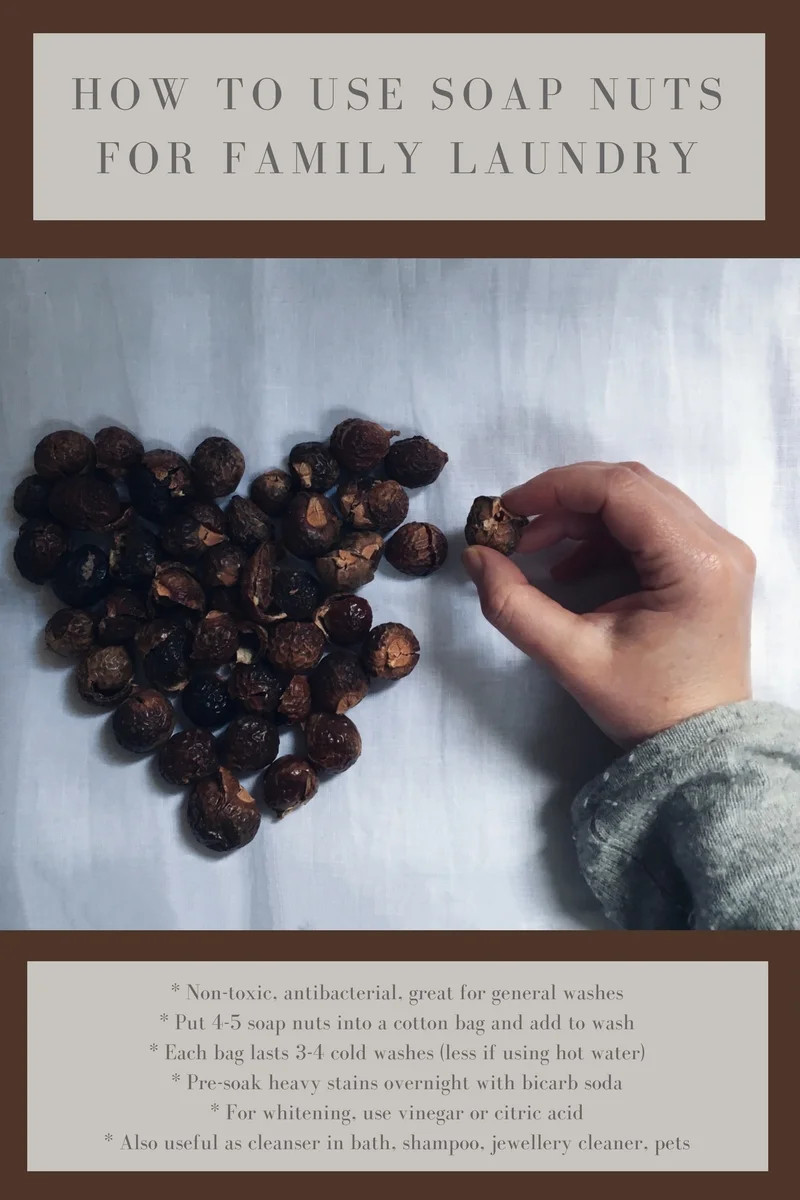
JOURNAL
documenting
&
discovering joyful things
Just one thing: the inconvenience of saying no
Last year, I started writing intermittent blog posts about how I was trying to do “just one thing” to live in a more sustainable way, and take better care of our planet.
The idea of “just one thing” came about because the whole problem just seemed too big, and overwhelming, to navigate as a whole. Especially once I started to learn that recycling wasn’t the magic cure-all we had once believed it would be, and that the resources required to recycle our waste were enormous and (ironically) mostly-unsustainable.
So, rather than trying to fix everything at once, I tried doing one small thing at a time and, once that thing became habit, I started doing something else.
As time went by, I was proud to find that our previously-overflowing bin would go out each week with a lid that could actually close. I realise that’s not a big step for some people (in fact a full bin is worst-case, not best-case, for a lot of families), but it was a big achievement for us.
But one thing I’ve come to realise is just how much of what we buy comes in packaging that I then need to toss or recycle, so that bin does keep on filling up despite everything I’ve been doing. Right now, I’m just not in a place to be able to make all our own cosmetics and toiletries, for example, and store them in pretty glass jars, or repurpose our old tuna tins into bookends. But every time I buy these things, the packaging ends up in recycling or landfill.
You know the stuff I’m talking about: in the bathroom, we have toothpaste, deodorant, moisturisers, cleansers, shampoo, conditioner, body-wash, hand-soap, hand-cream, sunscreen, lip-salve, and all kinds of other rubs and scrubs. If you come with me into the office, there are glue-sticks and plastic pens and boxes of staples and bulldog-clips, all my paint tubes, plastic document-sleeves, printer ink cartridges, and on it goes. Under the kitchen sink, I do use bicarbonate of soda and vinegar for a lot of my cleaning, but you’ll still find washing up detergent, washing up gloves, and an enormous array of chemicals in liquid form that do all kinds of damaging things to our planet, stored in plastic containers.
It’s heartbreaking!
I think that our extended stay in France has really hammered home to me the extent of our household waste. First of all, because when we first arrived here, I had to buy just about everything from scratch. Cleaning supplies, hygiene supplies, and all those pantry-staples like oil and flour and rice… I had to buy all of them, and they all came in packaging. Secondly, we don’t have any compost in this apartment, and the only recycling is glass. So every day I can actually see all that cardboard and plastic I’m using. I still separate it out - old habits die hard - but then it all goes into the one big bin outside.
But by separating out the cardboard and plastic, and then throwing it all into landfill, I have been inadvertently sending myself a powerful message. I can actually see all of these things I am bringing into my home. Back in Australia, I toss them straight into the recycling, and they are much more easily forgotten.
And this brings me to my “just one thing” for today: saying no, even when it is inconvenient.
I don't really have the answer, just yet, and if you have any experience of this, I’d love your help! But I guess what I want to talk about today is being mindful not only of what we do with our waste once it becomes waste, but of what we bring into the house in the first place.
For example:
Could I buy less food, so we don’t throw out as much? (Could we get better, as a family, at eating leftovers even if we don’t feel like eating that again today?)
Could I buy more in bulk so that even if the container is plastic, it’s only one instead of five?
Could I do without some things from the supermarket, and wait until market day so that I can pick them up without packaging?
Earlier this year our family supported this successful crowd-funding initiative for reusable, glass bottles for our milk so, when we return to Australia, I’ll need to get good at picking up and returning our bottles from specific places
Could I get better and bringing my own containers to the butcher and tell them not to put my meat in any plastic or wax paper?
Could I bring my containers to the green-grocer and give them back the plastic containers for cherry-tomatoes and berries? Or if they can’t take back the containers, could I suck it up and just not buy cherry tomatoes or berries until I can get them from the market?
Could I bring my empty egg-containers back to the green-grocers, just as I do at the markets?
Confession: when I started writing this blog post this morning, I was thinking, “this one thing is too hard. I don’t have any good answers.” But as I’ve listed the ideas and questions above, I realise I was simply feeling overwhelmed. I know my ideas won’t solve everything, but surely they are better than doing nothing! All I need to do is be willing to accept a tiny bit of inconvenience in order to keep making the changes I so badly want.
I’d really love to hear what you do - I’m sure there are loads of things I haven’t considered!
Some other ideas
In the meantime, following are some of the other actions I have gradually been taking during the past few years to help reduce my footprint on this planet.
I share this list here in case it inspires you, or gives you ideas, but I do want to add in the caveat that I am doing these things one thing at a time, not always successfully and often with stops, starts and backslides. If you are new to the journey of sustainable living and this all seems overwhelming, I hear you! I encourage you to be kind to yourself, and to consider trying just one thing, either from this list or something else. (I’ve included a “how it helps” hint at each of the steps I’m sharing below, so you can see how even one little change in our lifestyles can make a big difference.)
On the other hand, maybe you are way ahead and have loads of other great ideas for how we can do “just one thing” to care for this planet a more mindful way. I’d really love to hear what you are doing, in the comments so everyone reading can benefit from what you’ve learned.
We each have to walk our own paths according to our own beliefs, budgets, family circumstances, family pushback to making changes (!), available time… so I guess I just want to say that there is zero judgement here (and honestly, very limited success on my part), and all I hope is that this list will kick-start ideas or conversations. OK, here’s where I’m at so far:
Taking my own carry-bags shopping, instead of accepting plastic bags. At first I forgot a lot, but now it’s habit. (How it makes a difference: if everyone in Australia refused just ONE plastic bag at the supermarket, there would be 24.6 million less plastic bags that go into landfill)
Seeking composting solutions that work even though we only have a tiny garden. So far I’ve really liked this composting cannon, but I’m considering upgrading to something that will accept more of our organic household waste. (How it helps: I am guilty of previously thinking, “Oh, but food waste breaks down, so it’s fine.” Turns out, food waste creates methane gas, which is 25 times more damaging to the environment than carbon dioxide. If everyone in Australia composted only 10 percent of their uneaten food, we’d be keeping 330,000 tonnes of rotting, gas-producing waste out of landfill)
Using reusable cups for my take-away coffee (or in France, only drinking coffee at cafes). I have an assortment of reusable cups at home: the classic reinforced glass cup, one that’s a thermos inside so my coffee stays hot for longer, and a beautiful stoneware mug with a removable lid. (How it makes a difference: reduces landfill and resource-waste. Despite ‘feeling’ like cardboard, more than 99 percent of disposable coffee cups are not recycled because of the plastic lining that makes them heat- and moisture-proof)
Replacing my use of soft plastic, like cling-wrap, with reusable beeswax wraps. I use them to cover bowls in the ‘fridge, keep cheese fresh, wrap up sandwiches for picnics and lunch boxes… they are great for practically anything, as long as you don’t use them with meat (because they can only be wiped down to clean) or anything hot (because beeswax melts!). (How it makes a difference: cling-film goes into landfill and recently I read that more than 1.2 billion metres of cling film was being used by households in Britain alone, every year, enough to circumnavigate the entire planet 30 times over)
Stop buying bottles of sparkling water. We did buy a soda-stream instead, but basically we have taught ourselves to drink still tap-water at home. (Groundbreaking, I know. What ridiculously privileged lives we lead!) I also carry a lovely, reusable drink bottle with me when I’m out and about, so I never have to buy bottled water for myself or the kids. (How it helps: every minute, one million single-use plastic bottles are purchased around the world. There are more than five billion adults on our planet - if only 1 percent of us said no to one plastic bottle each, there would be 50 million less of them polluting our planet)
Using stainless-steel, reusable straws at home, and refusing straws when out and about in pubs or cafes. (How it makes a difference: every year in Australia, we use and throw away 540 million straws in our pubs, more than 310 million straws in McDonald’s restaurants, and countless more in other cafes, restaurants, food courts, cinemas, sporting grounds, schools, hospitals, parties and homes. Straws are so small they slip through recycling, and end up in landfill or polluting our waterways, causing the kind of suffering to wildlife that made this heartbreaking video go viral)
Reducing the amount of plastic containers I use in the home. Bit by bit (because replacing plastic is expensive!) I have been swapping our plastic kids’ plates, party plates and picnic-ware for enamelware, and collecting food containers made from reinforced glass. As a more affordable solution, I’m also very partial to storing up old biscuit tins to hold everything from home-made cakes to pasta and first aid supplies. (How it makes a difference: businesses buy what we demand. If we stop buying plastic, companies will stop making it)
Replacing our laundry detergent with soap nuts (I wrote about that change here). (How it helps: most conventional laundry detergents contain chemicals like sulphites, phenols and fragrances, which all end up in our waterways and next to our bodies. They also come in plastic or cardboard containers, which either go into landfill or have to be recycled,further taxing resources)
UPDATE: If you are seeking extra inspiration, just after posting this I discovered that my lovely online friend and a food writer I deeply admire, Sally Prosser, had also written this useful post on 10 ways to use less plastic.
Thinking of you
Sometimes do you find that the longer you leave a conversation, the harder it is to have? I'm not talking about "tricky subject" conversations necessarily, even something as lovely as a catch-up with a dear friend. If you haven't seen or spoken to your friend in weeks or months, a quick half-hour catch-up over coffee just won't do it: there's too much to say, too much to retell! And so you put off the coffee until you can plan a dinner, or a whole afternoon. But time races on and you never do find the enough time to do that, and all the missed conversations between you accumulate, and something as ineffectual as a half-hour coffee catch-up seems even more ridiculous.
That's a little bit how I feel about this blog right now. There's so much I have to say and share that I don't even know where to start. And I don't really have the time to be telling all the stories, but I miss this blog. I've put off writing in here because I feel too busy to tell the full story. But then all I do in the meantime is collect more stories, and neglect this little space.
Last week I was hunting for a blog post I'd written a while back and, as I scrolled through my own archives, it made me so happy and a little nostalgic to read back through all those stories. I called my blog "Naomi Loves" because I wanted it to document the things I love: things made, discovered and celebrated. I have protected it as my own space, choosing not to monetise or do anything else that would let this blog belong to someone else. It is my happy place, and yours if similar things make you happy. And reading back over it the other night did make me happy.
So I'm back, even if only for a half-hour coffee chat. A similar equivalent is when I tell my letter-writing students not to always feel they have to write a grand epistle. Sometimes, the weight of writing an amazing letter gets in the way of writing any letter at all. So I tell them, "Write a postcard. Tell the person, 'I'm thinking of you.'" This is my postcard to my blog, and to you. I'm thinking of you!
Here are some things I've been doing lately...
* Wrote and launched my Create with Confidence mentoring program and e-course, which is up and running now (I can't wait to share all the amazing things my students are creating. They are the most incredible bunch of women.)
* Gave an interview to Issue 23 of Flow magazine, and took over their Pinterest board for a month
* Learned how to make pasta properly at a children's workshop (pictured) hosted by Lunch Lady magazine with the lovely Julia Ostro. (Four-year-old Ralph also learned how to pronounce orecchiette to perfection)
* Visited Orange in NSW for the My Open Kitchen gathering, an entire weekend of wisdom, inspiration and community, and chatted with Skye Manson on the My Open Kitchen podcast about art, books, community, and kindness
* Talked to In Clover magazine (volume 4) about letter-writing and slow living, and how to make mail-art
* Finished writing my book The Art of Mail, finalised the cover art, sent it to design, and am now finalising the last of the illustrations to go inside
* Nervously joined sales coach Jessica Lorimer on her podcast to receive on-air coaching about how to sell my courses with integrity, gentleness and consideration
* Finally convinced my family to go camping with me. We were woefully under-prepared, and froze all night, but the children are still talking about it with joy months later
* Had the most lovely natter with Miranda Mills on the Tea & Tattle podcast, all about letter writing and forging real connections
* Shared my thoughts about the joys of letter-writing in the family issue of Peppermint magazine
* Wrote a mini e-book for people who struggle to find the time for their creativity, called Time to Make (it's free for subscribers to my newsletter and you can get a copy here)
It seems like a lot when I write it all down like that. No wonder I'm so tired! I hope you'll share what you've been up to, too. It's time I stopped talking, and started listening!
Talk soon, Naomi xo
Composting for tiny gardens (even courtyards & balconies)
Hello! This is my city garden! It is the size of a single car-space, because until two years ago, it was a single parking space. We gave up having a guaranteed place to park our car in favour of creating a green room in which to relax, ponder and play, and it was the best decision we made in our entire home. The photograph above was taken last week, while I was cleaning up after a garden party during which we had had 40 guests over for afternoon tea. It was a warm day, and there were not one but three compost receptacles decomposing away in this very small garden. But nobody could see them, and nobody could smell them. Hurrah!
How did we do that?
In my ongoing quest to reduce waste in our home, and lessen our impact on the planet, it has particularly irked me that we didn't have a composting system. Even after we built the garden, I continued scraping mountains of food-scraps into the bin every day.
Essentially, space was the problem. Even the smallest of compost bins were quite big in relation to our garden. They'd create a giant, plastic eyesore, taking up precious growing-space. And, more to the point, occasionally smelling bad. (I know, I know, properly managed composts don't smell. Much. But if your garden is so small that you can all but touch both sides of it when stretching out your arms, that puts you in very close proximity to the compost no matter where you go. I live in Australia, friends. Things get hot in the summer. Pile as much dry matter and mulch as you like into that bin, the stench of slowly rotting watermelon rinds and browning banana peels will find a way to cut through, as do the sandflies. It's gross.)
Day after day I kept scraping rinds and pulps into the rubbish bin, wishing I could scrape the guilt of my wasteful habit away with them. And to add insult to injury, I was paying good money to buy compost for the the garden in spring-time! I did my best to keep the waste low, by planning better, shopping smarter, and being more creative with my cooking. Thanks to the magic of the Instagram community, for example, I now have a host of delicious ways to use the green parts of leeks in my cooking. Recently I've learned how to dye fabric using avocado seeds and skins. But still, the rubbish bin is full of compostable matter every week.
Or I should say, was full. Enter the composting cannon.
Fair warning: I am about to wax lyrical about this product. I'm not being paid, sponsored or in any other way encouraged to say this stuff. These links are not affiliate links, and these makers don't know I'm writing this blog at all. I'm just thrilled to finally have found a solution to my organic waste problem.
(BTW in case the composting cannon doesn't appeal to you, I've also provided a bit of a product round-up of some other fantastic composters for small spaces, as well as beginners tips on composting, at the end of this blog post.)
I discovered this little Australian invention at the CERES Community Environment Park, but you can also buy it online here. It is such a simple idea. You simply bury the cardboard cylinder in your garden (or in a planter box or big pot). Empty your food scraps into the cylinder, add a bit of mulch or shredded paper for dry matter, and push it down with the plunger provided. There's a mesh lid that keeps vermin away, holes in the side for worms to make their way through, and the whole thing breaks down over many months, delivering compost direct to your garden!
When I first took mine home, I couldn't quite figure out how it worked (it was just too simple - surely I was missing something!). So I've created a kind of mini tutorial for you in case you want to try it yourself.
How to use the Composting Cannon in a tiny garden
Step 1: Take the cannon out of the box, stare at it a while, and scratch your head. It will look like the picture above. There will be three cylinders, all with holes in them, each one fitting inside the other (like matryoshka dolls). Wire lids sit on both ends. Finally figure out that you have actually bought three "cannons" for the price of one, and feel very silly for not realising this in the first place. Separate them out. The wire lids are sized to fit the different width cylinders.
Step 2: Find somewhere in your garden where you can dig a hole about 12 centimetres wide, and 30 centimetres deep. If you're using pot plants, as long as the pot is at least 30 centimetres deep, you can use that just as easily. (The only challenge will be if your pot is too shallow - you don't want part of your composting cannon sticking out the top, looking ugly). Bury the cannon, leaving just enough of the rim sticking out of the top so that you can fit the wire lid over the top.
Step 3: It's ready to use! Tip any plant-based food scraps you like into the cylinder (some tips: citrus, onions, dairy and vegetable-fat products will slow down the composting process so should be minimised; and meat and animal fats should be kept out altogether because they attract rats - and smell really bad. There's a more extensive guide to what should and shouldn't go into a compost in the download at the end of this post). Now add a handful of mulch, dry leaves or even shredded paper on top. Use the plunger (it comes with the kit) to push everything down, then put the lid back on. Repeat this every time you have more food scraps, and that's it.
There is literally no maintenance - the worms do all the work for you, not only breaking down the scraps and creating the compost, but then carrying that compost through your garden or planter box, delivering it directly to the roots of your plants.
According to the website, each of these cylinders will compost more than 20 kilograms of organic waste during a four-month period. So with three, that's more than 60 kilograms transformed from stinking landfill into beautiful, nutrient-rich compost for the garden.
This is a really unobtrusive composting system. My three, when I'm not topping them up, look like the picture below. Actually they look even less obtrusive, because wind and birds cover them each day with the mulch, which I had to move aside to take this photograph.
The contents of your cylinders (and the cylinders themselves) will start to decompose after about four months. It takes even longer than that for them to start to be unusable, after which you can replace them (they are not expensive to buy, especially when you consider how long they last) and start all over again, adding more nutrient-rich compost to other areas of your garden or potted balcony.
One last thought: I do think you need to be somewhat realistic about just how much food waste you can fit into these little babies. We are a hungry family of four and, thanks to 50 percent of our family being pre-school aged, a lot of food gets dropped, tossed, played with or otherwise rejected (especially the vegetables!) so we tend to generate a lot of waste. On some days, when (for example) we've eaten through four bananas, made freshly-squeezed orange juice for the whole family, had a few slices of watermelon, and made a vegetable stir-fry for dinner, we can fill an entire cannon in one hit. If I've filled all three in quick succession, I do sometimes have to wait a few days and go back to putting the food scraps in the bin, until the food breaks down a little. So that's not ideal, but it is still a LOT better than our previous habits, and a great result for a tiny, inner-city garden.
Clever composting solutions for tiny gardens
Here's a quick round-up of some innovative composting solutions I've discovered online that appear to be great for reducing organic waste and creating garden nutrients when you only have a small space in which to work. (Remember I've only tried the Composting Cannon. I think I'll try the Bokashi next, and the two systems can supplement one another).
* Tumbleweed Compost Tumbler: a barrel on a stand than can be spun every couple of days to aerate the compost without needing to dig or turn
* Bokashi scrap fermenting: a system that is used to actually ferment kitchen waste (including meat and fish) by using micro-organisms to break down scraps, without creating bad smells
* Hungry Bin: a continuous-flow worm farm, on wheels so you can move it around your garden or balcony
What do you think? I'd love to know your ideas or experiences on composting or otherwise reducing and reusing food waste in small spaces. And in the meantime if you're keen to get started but this is all new to you, I've created a handy, guide below with some basic tips on composting for beginners (including what to include and what not to include in a healthy compost), whatever system you decide to use.
Why we all love brownies
What is your go-to comfort food recipe? That one thing you can bake, stir, chop or pick that cheers you when you're down, makes any celebration sweeter, or reminds you of someone - or somewhere - that holds a special place in your heart.
Turns out that for many people all over the world, it's brownies. Rich, sweet, gooey, chewy (and easily made gluten-free) chocolate brownies.
When I launched the "meals in the mail" project a few months back, I asked people to do two simple things:
1. Send me their favourite recipe in the mail, and
2. Tell me what makes it special to them
Now as I sort through all the heartfelt letters, delicious recipes and creative mail that came my way, themes are starting to emerge. And one of those themes is this: everyone loves brownies.
I tender in evidence, these seven recipes.
Sonya in Australia, for example, shared her recipe for dark chocolate brownies with salted caramel (below). She said:
"Home-made brownies can say a lot of things - I'm sorry you lost your job, let's celebrate the winter solstice - and this recipe has even survived a trip in the post. When my friend Jemma's second baby arrived, I baked these brownies, sandwiched them between two thick slabs of cardboard, and dropped them in a post box. They survived the journey from Canberra to Sydney in one piece."
Then Nanette in The Netherlands shared her recipe:
"I got this recipe from an English girlfriend when I was 25. Even 30 years later and some little changes, it is our favourite family brownie recipe. The whole family makes these brownies for birthdays, or just when someone is in need of chocolate or comfort food."
From Canada, Sherry shared buttermilk brownies and a tribute to her mother Elaine:
"This is my mom's brownie recipe and I can't even begin to tell you how many of these I have enjoyed over the years. My mom is an amazing woman... in addition to raising three kids with a husband who was away much of the time, she worked full time and still managed to be there for all of our girl guide meetings and art shows. The brownies were and are still a go-to recipe that even the pickiest eaters enjoy."
Jessica in Australia shared the recipe for Caramello brownies that won her boyfriend's heart:
"I first made these to impress my boyfriend and it must have worked because we're still together seven years later! They're always a crowd-pleaser and make your house smell great when they're baking."
And then from Denmark, Linea shared her hygge-inducing Lazy Brownie recipe:
"This cake tastes like a little piece of chocolate heaven if you use good ingredients and a tiny bit of love! I love that moment of silence when everyone takes a bite and just enjoys the chocolaty-ness! My favourite thing to bake in winter-time and eat with a cup of tea."
Laura in New Zealand shared the brownie recipe that helped her make it through some tough times:
"This recipe belongs to Kate, my boss at the New Brighton Library in Christchurch. Even though both of us no longer work in that library, her brownies helped the team get through some rough patches. They never let me down."
And in Austria, Miya shared a recipe for olive-oil and sea-salt brownies that came to her via a friend in America, who adapted it from a recipe in the NY Times:
"I love this recipe for several reasons. Firstly, it's genuinely easy but decadent and delicious! Secondly, my husband produces olive oil in Greece so it's one of my favourite things to make for him if he needs something to showcase his products - an act of love, if you like. Last but not least, it was given to me by my hot-mess New Yorker friend Meaghan. We met in our first week of moving to Vienna 10 years ago, and have lived in and out of each other's homes ever since, sharing a love of music, baking and the charming contradictions that make Vienna what it is. So I'm passing this recipe on to you and your community in the spirit of our friendship and the city it was born in. Wholesome yet a little decadent, simple yet a little extravagant, familiar and cosy but also a bit of a hot mess. And if you ever come to Vienna, you're invited to coffee and cake!"
So if you're wondering which of these seven recipes for brownies I'll share in the finished book, the answer is...
All of them. Naturally! Firstly, because this cook-book is not only about the recipes, it's also about the stories, the memories, the connections, and of course the mail. And secondly, because maybe you might want to try a little experiment when you read the book: a brownie bake-off for you and your friends, shall we say? I wonder what your favourite secret ingredient will be. Sea-salt? Caramellos? Buttermilk? Olive oil? A mother's love?
Meals in the Mail is a cook-book project celebrating meaningful, nostalgic and comforting recipes from close to 250 people from all over the word, written by hand, and sent by post (often with stunning illustrations on the recipes, or the envelopes, or both).
People who sent in recipes for meals in the mail will all receive a copy of the e-book for free, and get first dibs at buying the physical cook-book, which will be on a limited print-run.
If you'd like to be among the first to hear when both versions of the cook-book are available for sale, and to get updates on the projects and sneak peeks at the recipes, the best way is to sign up to my newsletter (right now I'm also giving away a copy of my mini e-book "Making Mail: 10 steps to writing letters that become keepsakes," to all subscribers).
And now, back to the question I asked at the start of this blog post. I'm dying to know: what's your go-to comfort food recipe? (Is it brownies??)
What to do with the green part of leeks
Now that's a catchy title, isn't it. A poet I clearly am not! Anyhoo...
Last week I made my favourite cauliflower and leek soup (with truffle oil - it is SO good. If you'd like the recipe, let me know and I'll share it on here). As always, though, I was left with the tough greens of the leeks, and no idea what to do with them.
But instead of tossing them away as I have in the past, this time I put the greens back into the 'fridge, then put the question to the Instagram community: "I made soup but what can I do with the green parts of the leeks?"
As it turns out, quite a lot! In case you have the same question, following are some of the tasty suggestions I received.
Fondue de poireaux (leek fondue)
This was suggested by @ninondanslenclos. She says, "Cut the leeks in small parts and let them simmer with water in a pan at low heat, until the leeks are soft. Also, you might replace some of the water with white wine and/or creme fraiche (French habits). Add salt and pepper depending on your preferences. I would advise to serve with white rice and chicken, or tofu for a veggie version."
Chicken stock
Food writer @estelletracy suggested using the green parts of the leeks when making chicken stock. There are loads of recipes for making stock online, this one looked good to me.
Soup, stew or broth
Similarly, @__roxana_nicoleta uses the green parts of leeks to flavour all kinds of slow-cooked things, including soup, bone broth, vegetable broth, and stew.
Steamed leaves
As a simple but tasty-sounding idea, @thetallphotographer says, "The end bits can be tough but the paler bits are lovely steamed with garlic butter."
Leek, potato & bacon pie
How delicious does this sound? From Denmark, @lineaswonderland shared the following recipe:
Ingredients:
Tart bottom (home-made or store-bought)
3 leeks (or the greens of them)
A pack of bacon bits
4 eggs
2 dl* cream
800 grams (28 ounces) potatoes
salt and pepper
Method:
* Set the oven to 250 degrees Celsius (482 Fahrenheit)
* Peel the potatoes, cut them into small pieces, and boil them for 10 minutes
* Line the pie-tray with the tart bottom, and poke holes in the bottom with a fork
* Set the tart-bottom in the oven for five minutes
* Cook the bacon (@lineaswonderland suggests doing this in the oven to minimise greasy mess)
* Whip together the eggs and cream, the season with salt and pepper
* Clean, separate and cut the leeks into rings
* Put the bacon, potatoes and leeks into the pie, then pour over the egg and cream mixture
* Bake for 30 minutes
*dl stands for decilitre. 2 decilitres are equivalent to 200 millilitres, or 6.8 fluid ounces
What do you think? Would you try these? Do you have any recipes or ideas to add to this list?
Just one thing (soap nuts)
A month or two ago I decided to share a semi-regular post about "just one thing" I'm trying to do to lessen my impact on the world around me. Living in a more sustainable and considered manner is important to me, but I'm realistic about how difficult it is to make wholesale changes in life... let alone to drag others along for the ride if they're not on the same page.
Last time I wrote about our family's adoption of beeswax wraps to replace cling-wrap in our house, and those are still going really well.
In this post, I wanted to talk about a relatively-new discovery of mine: soap nuts.
Soap nuts are actually dried berries. They have a very high percentage of saponin, a chemical compound found in a number of plants, and it is great for cleaning. Saponins remove dirt and oil from clothing when used with water (and the soap nuts even lather up like "real soap").
So about three months ago, I started to replace the laundry detergent we use with soap nuts. I was keen to find an alternative to our regular laundry detergent, for a number of reasons. (A number of reasons which I managed to make all start with the letter P, because that's how I get my kicks and clearly I need to get out more):
PERSON: My son Ralph and I both have skin irritations to a number of laundry detergent brands. Apparently this is a common response to two rather toxic ingredients frequently found in laundry detergents: sodium laurel sulphates (used to makes bubbles and foam, but can strip the skin of its moisturising protective barrier); and zeolites (which enhance the lathering effect of laundry detergents, but commonly cause skin irritations).
PREVENTION: A lot of commercial laundry detergents contain synthetic fragrances. Again, Ralph is prone to allergies, eczema and dermatitis, so avoiding petrochemicals and other nasties in the clothes that wrap him all day long is quite appealing to me.
PLANET: The high sodium levels and alkaline pH levels in laundry detergents can be toxic to plants and waterways. Also, a number of commercial laundry detergents are tested on animals, and I'm keen to avoid that if at all possible. Soap nuts, on the other hand, are low irritant, not tested on animals (duh), and can be put into the compost after use.
PRICE: A 500 gram bag of soap nuts cost me less than $30 to buy, and lasts approximately 200 washes.
The first time I tried soap nuts, I admit to being verrrrry skeptical. It just didn't seem likely that a handful of sticky berries could make an entire load of laundry clean and fresh. So I decided to apply the most stringent test I know: Mr B's Nose.
If Mr B has a super-power, it is his nose. The man can catch a wiff of something out-of-place in a room or on a person at 20 paces. Admittedly, Mr B is yet to learn how to fully hone his superpower. He's great at detecting smells, but not so great at identifying them. Exhibit A: Mr B walks into the playroom, sniffs the air, and announces "Oh no, I think the cat did a poo in here!" I produce a vase of fresh flowers and ask, "Is this what you smell?" Mr B looks relieved. "Oh yes, that's it."
But I digress. Bearing in mind Mr B's super-nose, I decided to replace our regular laundry detergent with soap nuts, without telling him. When the clothes were dry I inspected them for dirty marks (there were none), and sniffed them (they smelled fresh to me). But the true test was yet to come: I put them away in the drawers, and waited.
I used the soap nuts to wash our next load of laundry, and the one after that. I washed, and I waited.
My husband is not famous for holding back, so I knew that if at any stage he caught even the faintest waft of something not-quite-right, he'd complain. He didn't. When, after a month had passed without comment, I confessed my switch to Mr B. The response was a quizzically raised brow, but that was the sum of it.
Some tips, in case you want to try soap nuts too
I've been using these little guys for about three months now, and here's what I've found:
- They're great for general washes, and get out dirt just as well as our laundry detergents. For each load, I put about four or five soap nuts into a little bag (which was supplied when I bought the soap nuts)
- I use cold water, and replace the soap nuts every three or four washes. Apparently you'll need to replace them more often if you use warm or hot water
- They won't remove stains (a non-toxic tip I've learned is to dampen a stain with cold water, then cover it in bicarbonate of soda. Gently rub the bicarb soda paste into the stain, then leave it to soak in overnight. The next morning, rinse away the bicarb and then add the garment to your usual wash)
- Soap nuts don't have 'whiteners' in them, so if you're looking for that 'light, bright' clean, you'll need to do some extra work. Apparently you can get this with vinegar, citric acid and other non-toxic products, but I haven't tried any of these yet so can't guide you on how they work
- There are all kinds of other ways to use soap nuts, if you want to start experimenting. On the website for the brand of organic soap nuts that I own, there are recipes to use them to create a multi-purpose cleaner, cleansing bath, jewellery cleaner, shampoo, parasite prevention on plants, pet cleaner, and a hand-washing solution for delicates
So, that's my soap-nut story. How about you. Have you ever tried them? What are your experiences?
One hundred years of silence
For most of her life, Mr B's grandmother lived in a mud-brick cottage that a previous family-member had built 160 years before. It was set behind the more recent family home in which Mr B grew up and, for the children, Nan's house was a second home, a happy place that seemed stuck in the previous century, where a never-ending supply of old-fashioned cakes and Sunday roasts issued from the wood-burning stove in her tiny kitchen.
After Nan passed away, they found among her things a broken old Edison phonograph that had once belonged to Mr B's Grandad, and a big collection of cylinder records in beautiful old cardboard canisters. Mr B never knew his Grandad, who had died several decades earlier, and we don't think Nan or Grandad had ever played the phonograph. It was missing several important pieces. Instead, we think the phonograph had most likely belonged to his father in turn, and was just one of those things that never got thrown out.
For a hundred years those old cylinders, whose only purpose was to make music, lay silent and forgotten in a cardboard box in the family home. Unplayed records are a lonely thought, don't you think? Like old postcards never sent. I picture the records resting all through the decades, guarding their music and waiting, still waiting, for another chance to sing. So we sent Grandad's old phonograph off to be repaired.
And on Sunday afternoon, for the first time in a century, they made music.
Each cylinder contained only one track and, as far as we could tell, most of them were hymns. The very first one we managed to play was an old hymn called "Shall We Meet Beyond the River," which had been released as the Edison Gold Record we were playing in 1906.
I'll be honest, it's not Mozart, but to us it didn't matter. Mr B eased the record into place, wound the crank on the side of the phonograph, and slowly but with growing strength a crackly, slightly-distorted old tune broke one hundred years of silence and proudly entered the day.
To us, the music felt as though it hovered in the air like a time-traveller. A visitor from yesteryear: not ghostly, but as real and present as you or me. Layering one age upon another as if to prove, in a simple hymn, Einstein's theory of time relativity.
And then the crank ran out of puff, the long-dead singer and his orchestra slowed and deepened and distorted further, and eventually the old record slid back into silence once more.
Living slow - just one thing (beeswax wraps)
roman-kraft-64603
I have been on a mission to slow my life down during recent years. It's going... well... I am trying.
For me, ‘slow living’ is about taking the time to really think about what I am doing. To mean it, to put my heart into it. Cooking a meal from scratch. Turning off the TV at meal times. Writing a letter instead of banging out a text.
One thing I quickly discovered when I started on my mission of slow-living was that it was intertwined with mindfulness. They can't be separated. The very act of deliberately slowing down and putting thought and love into something is in itself mindfulness.
And with mindfulness comes, often unbidden (and sometimes unwelcome), my conscience.
For example, I can't slow down and cook something properly for my family, taking the time to do it right and appreciate every element - the food, the cook, the company, setting the table, eating together - without thinking about where it all comes from, and the impact it has.
Here's how my brain works:
If I'm taking the time to stir and simmer a beautiful pasta sauce, I'm going to try to find a great recipe that uses the best ingredients. Thinking about what "the best" means turns my mind to organic, and then I try to reduce food miles by buying local, which starts me thinking about the livelihoods of farming families. And then my mind goes to the impact of producing this fresh, beautiful food: is it packed in plastic? Am I then using more plastic shopping bags to carry it home? And what will I do with the waste when I'm done?
So a simple pasta sauce that once I might have bought in a jar from the supermarket turns into a trip to the farmers' market; brings the nutrients of local, organic food to my family; ensures the absence of excessive salt, sugar or harmful chemicals; is a reminder to carry my own shopping bags; forces me to explore avenues for food storage that don't involve cling-wrap and plastic; and kick-starts adventures in inner-city composting.
But it's just a pasta sauce. This is exhausting!
This is not an easy journey, and I certainly wouldn't say that "slow living" necessarily leads to "simple living" (although I'd like it to). But I will say that "slow living" leads, at least for me, to "sustainable living," and that is something I am proud to model for my children.
There is so much that I want to do and want to change, but it's not always accessible or affordable or something that the rest of my family wants to do. Slow is not something that I want to drag my family into unwillingly; it has to work for all of us.
So I have decided to be kind to myself (and my family), and do just one thing at a time. I try it, I play around until I get it right, I make sure it suits the family, and eventually it just becomes part of our daily lives. Then I move on to another one thing.
Alongside broader "lessening footprint" type goals, one of my first objectives is to reduce the amount of waste we produce as a family. We generate a LOT of waste. A criminal, embarrassing amount of waste. So one milestone that I've set for myself is to reduce our weekly garbage output to just one bin-full. I can hear you laughing, because it seems crazy that this is even a challenge at all, but we send extra bags of rubbish out every week. It's shameful.
Anyway... I thought maybe I'd share one thing I do with you each month, so we can be in this journey together as we go along. Maybe you're already doing what I'm trying, and can share some tips to make it work. Maybe you've never heard of this one thing, and it inspires you. Maybe you do just one other thing that you'd like to recommend that I try.
So for this month, the "just one thing" I want to share is beeswax food wraps, which I now use as an alternative to cling-wrap and plastic sandwich bags. I bought these "honey bee wraps" a couple of months ago and I confess to being skeptical at first, but nowadays I am utterly sold. I have about six on the go.
They're made out of cotton and coated in beeswax, jojoba oil, coconut oil and tree resin. You use them just the way you would use cling-wrap - to cover bowls, wrap around cut vegetables and over cheeses, to wrap sandwiches in lunch-boxes - and the jojoba and beeswax have antibacterial properties that keep food fresh for longer. The only thing you don't use them for is meat, because they only wash in cold water. The beeswax wraps are reusable again and again, so they quickly become affordable, but I also found this tutorial for making them at home, which I might try one day. It looks kind of fun.
So now there is no more nasty plastic* in my 'fridge, and there's that much less plastic waste in our bin every Thursday night.
What do you think of this one thing I'm doing? Have you used beeswax wraps? How did you find them? Or do you have another alternative?
Image credit: photo is from Honeybee Wrap, my beeswax wraps of choice (not sponsored just a fan!)
* I realise cling-wrap doesn't take up a whole lot of space in the garbage bin, but we are taking one step at a time, yes? Also, according to this article in Choice, cling-wrap contains plasticisers such as DEHA or phthalates that can leach into food, and research is casting doubt on the safety of these chemicals:
"BPA and some phthalates are endocrine disruptors, meaning they can mimic the body's natural hormones and thereby cause a raft of health problems. Infants and the very young are most vulnerable to exposure because of their lower body weight and because their growth and development are strongly influenced by hormones; the effects on health can be lifelong." Even at low levels, growing scientific evidence suggests that "phthalates and BPA may be causing problems such as infertility, obesity, breast cancer, prostate cancer, heart disease and diabetes."
Winter's coming
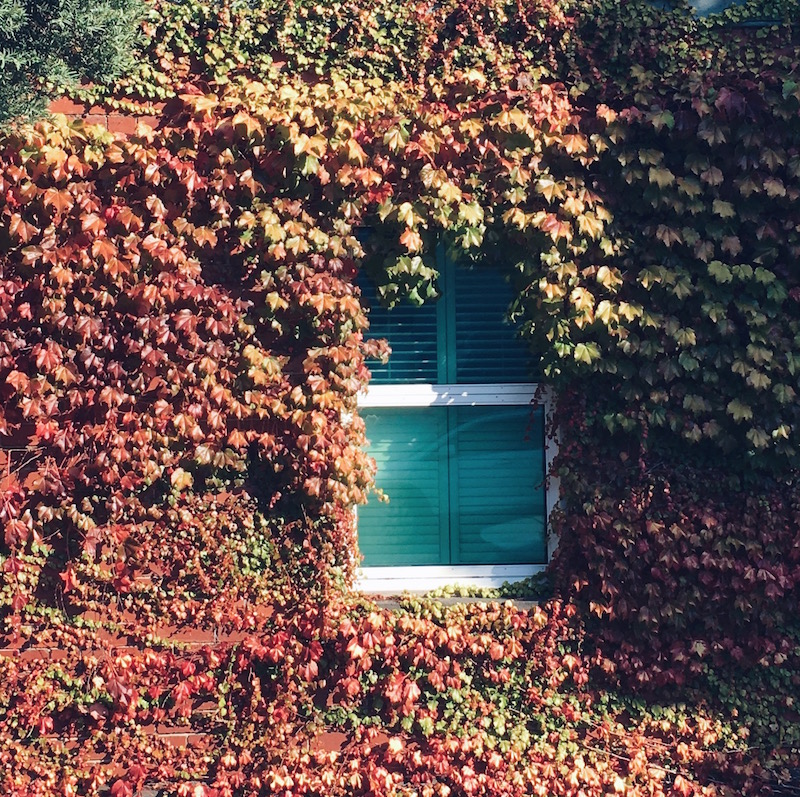
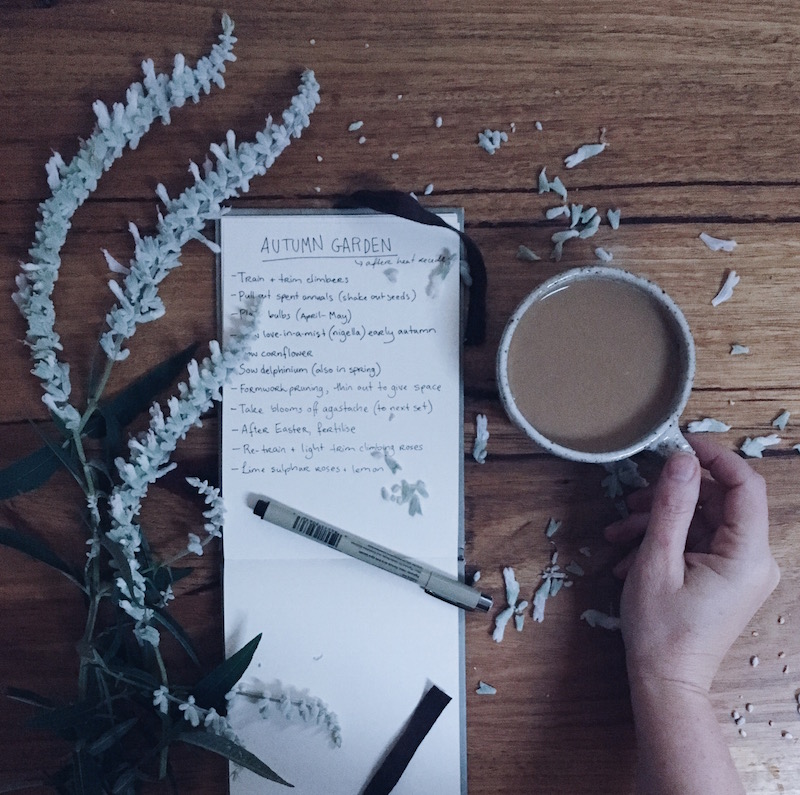
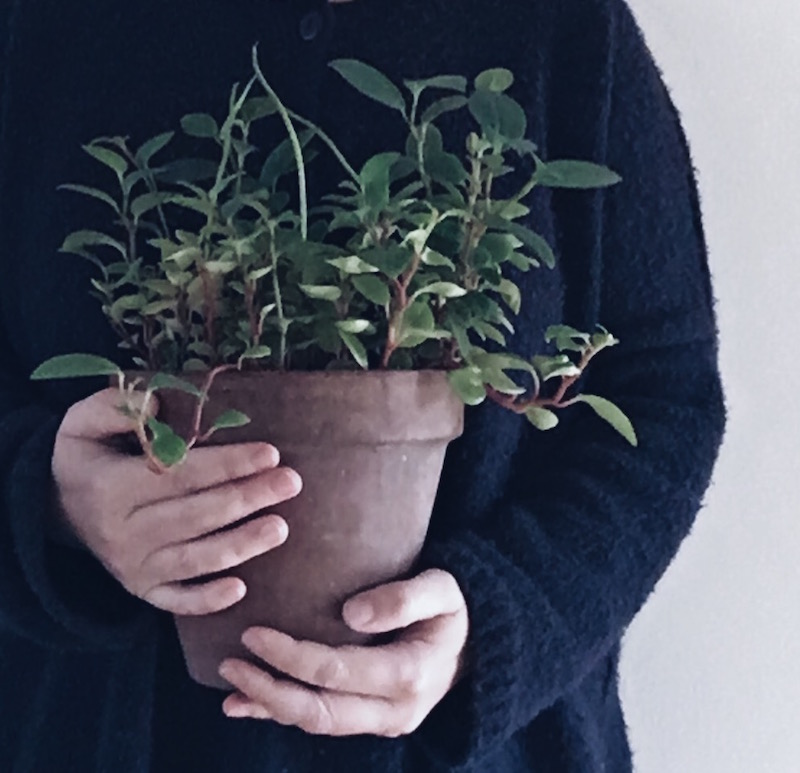
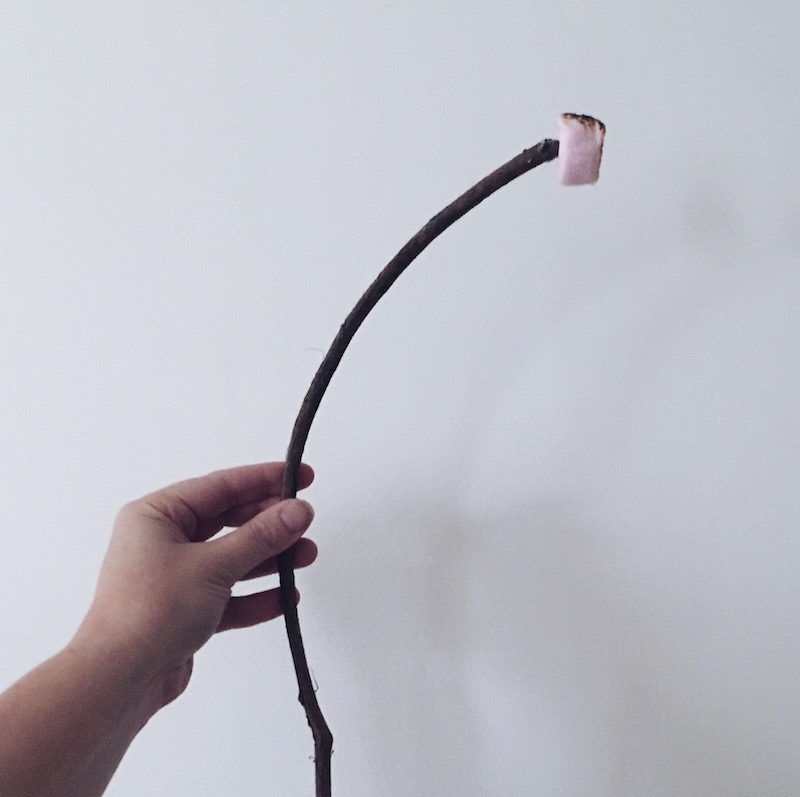
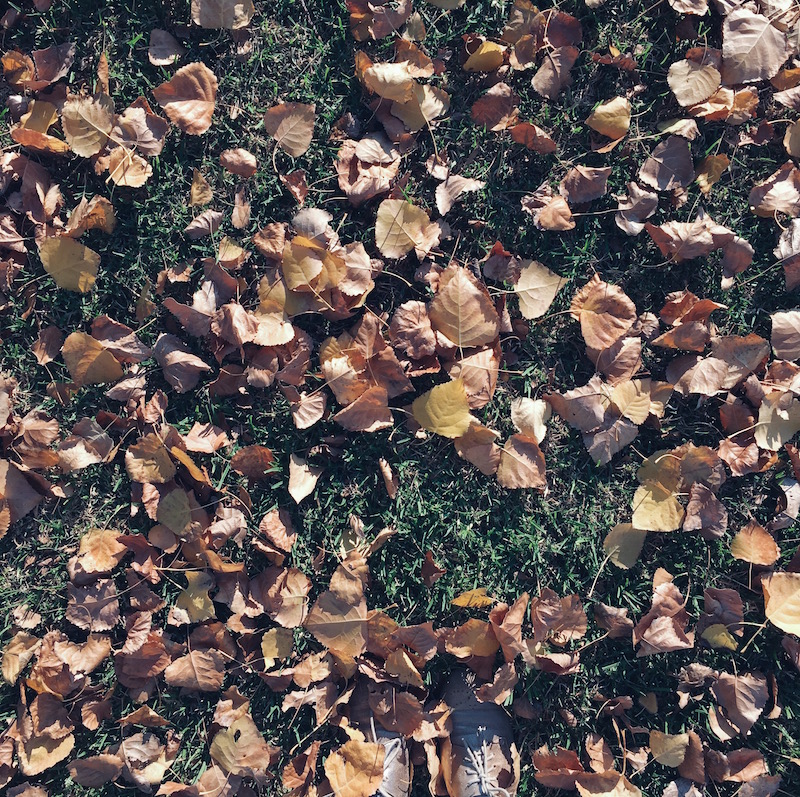
I have trimmed all the wild and rampant late-summer flowers of my garden back into neat, stumpy little mounds. Bending close, I can just see the buds of spring's growth waiting there, sleeping now until the southern hemisphere circles back closer to the sun. The pomegranate, crepe myrtle and Japanese maple trees are all putting on colour, and dropping leaves like golden confetti at our feet.
Twice a week when I go out early to exercise in the still-dark, the cold air hits like a slap when I open the front door, and my fingers and toes are numb from wind and wet grass* before we even get started. But when we all lie down on our yoga mats to prepare for crunches, I look up, up, beyond the black outlines of the trees, to a sky that is so full of stars they look like rain-drops, frozen in time, and it is perfect. And is that Venus I can see, glowing so big and bright? Why is the sky so much cleaner and more... precise... when it's cold? Dawn breaks somewhere in between plank-holds and left-hook punches, and mist makes clouds of our puffing breaths, before real mist rolls up and over the park, and swirls like a familiar cat around our ankles.
We have pulled our winter hats and scarves and coats out of storage, and I have turned my thoughts once again to soups and casseroles and mulled wine and home-baked bread. I am even ready to befriend the slow-cooker.
Knitted gloves and wooly socks, wading and dancing through rivers of fallen leaves, watching the Christmas pine-cones pop and crackle in the open fire, toasting marshmallows, baking good things with apples, and lighting candles at meal-times. Winter's coming, my friends!
*Wet shoes and socks are the WORST
Help! I need your slow-cooker recipes!
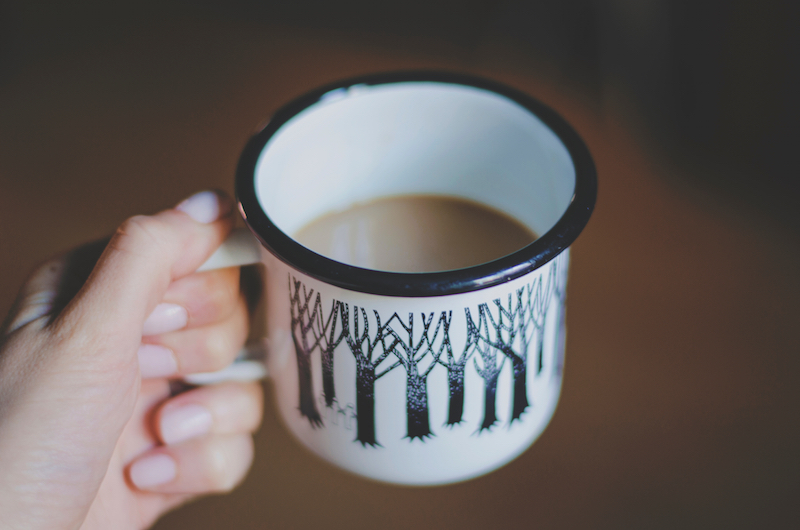 Every year, as the days grow shorter and the temperatures drop, I promise myself that this is the year I will learn how to properly use my slow-cooker. I'll prepare everything after breakfast, I tell myself, and the house will smell good all day. By dinner-time, delicious food will be waiting for us all with NO EXTRA EFFORT from me. It's like the promise of paradise!
Every year, as the days grow shorter and the temperatures drop, I promise myself that this is the year I will learn how to properly use my slow-cooker. I'll prepare everything after breakfast, I tell myself, and the house will smell good all day. By dinner-time, delicious food will be waiting for us all with NO EXTRA EFFORT from me. It's like the promise of paradise!
But instead, on the days that I do pull out the trusty old crock pot, all that waiting and sniffing and anticipation ends in really tasteless, insipid mush. All the good flavours seem to stay in the juice, and none of them seep into the vegetables or meat. What am I doing wrong?
Admittedly, my crock pot recipes were probably written in the 1970s (brown! so much brown!), but I've not had much better luck with random Internet searches either. There's just so much out there that promises plenty and delivers so, so little.
So, can you help me? What are your best slow-cooker recipes? Hit me with them my friends!
Photograph is by Sylvia Bartyzel, licensed for unlimited use via Unsplash. I really want that mug!
ps. Just a quick reminder that the next issue of my print-and-paint snail-mail newsletter goes out TOMORROW. Subscribe here if you want to get your mitts on some free mail-art templates



